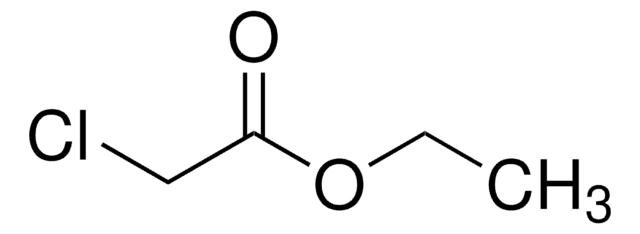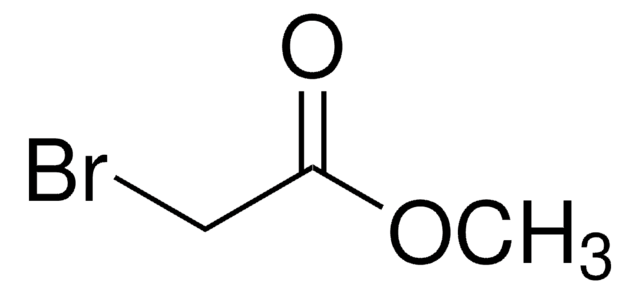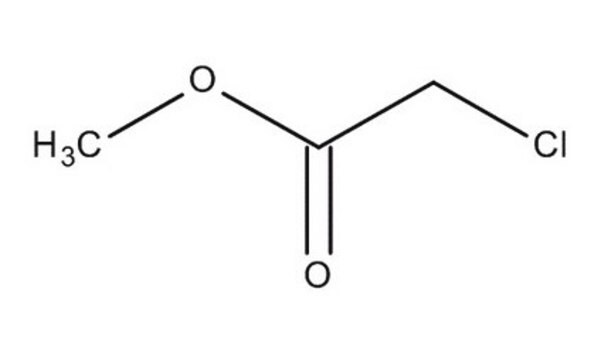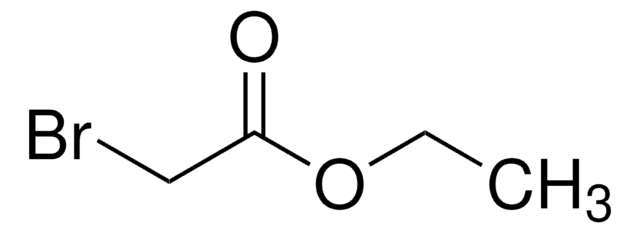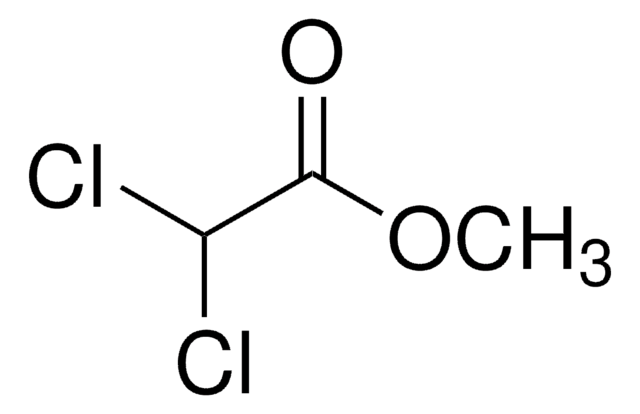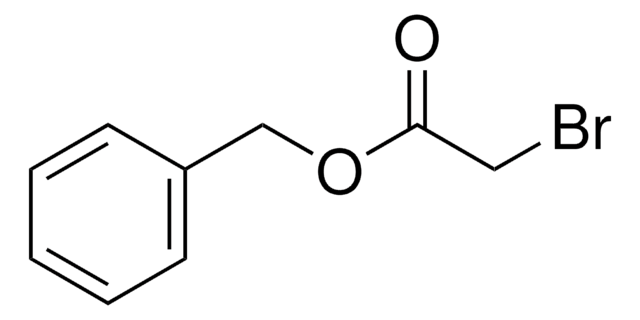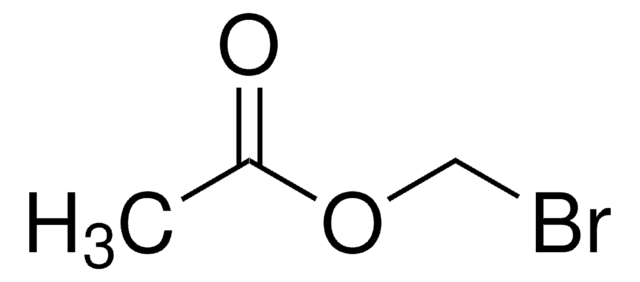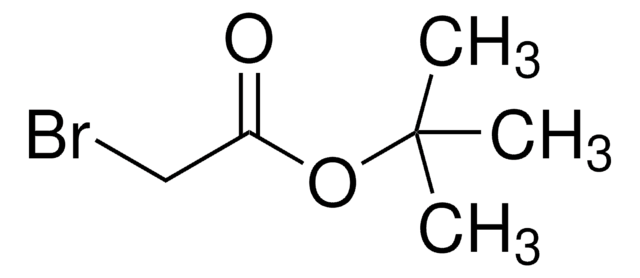108413
Methyl chloroacetate
99%
Sinónimos:
Chloroacetic acid methyl ester, Methyl 2-chloroacetate
About This Item
Productos recomendados
densidad de vapor
3.8 (vs air)
Nivel de calidad
presión de vapor
10 mmHg ( 25 °C)
5.25 mmHg ( 20 °C)
Ensayo
99%
temp. de autoignición
869 °F
lim. expl.
18.5 %
índice de refracción
n20/D 1.422 (lit.)
bp
130 °C/740 mmHg (lit.)
mp
−33 °C (lit.)
solubilidad
H2O: insoluble
alcohol: miscible
diethyl ether: miscible
densidad
1.238 g/mL at 25 °C (lit.)
grupo funcional
chloro
ester
cadena SMILES
COC(=O)CCl
InChI
1S/C3H5ClO2/c1-6-3(5)2-4/h2H2,1H3
Clave InChI
QABLOFMHHSOFRJ-UHFFFAOYSA-N
¿Está buscando productos similares? Visita Guía de comparación de productos
Categorías relacionadas
Descripción general
Aplicación
Palabra de señalización
Danger
Frases de peligro
Clasificaciones de peligro
Acute Tox. 3 Inhalation - Acute Tox. 3 Oral - Eye Dam. 1 - Flam. Liq. 3 - Skin Irrit. 2 - STOT SE 3
Órganos de actuación
Respiratory system
Código de clase de almacenamiento
3 - Flammable liquids
Clase de riesgo para el agua (WGK)
WGK 3
Punto de inflamabilidad (°F)
116.6 °F - closed cup
Punto de inflamabilidad (°C)
47 °C - closed cup
Equipo de protección personal
Eyeshields, Faceshields, Gloves, type ABEK (EN14387) respirator filter
Elija entre una de las versiones más recientes:
¿Ya tiene este producto?
Encuentre la documentación para los productos que ha comprado recientemente en la Biblioteca de documentos.
Los clientes también vieron
Nuestro equipo de científicos tiene experiencia en todas las áreas de investigación: Ciencias de la vida, Ciencia de los materiales, Síntesis química, Cromatografía, Analítica y muchas otras.
Póngase en contacto con el Servicio técnico